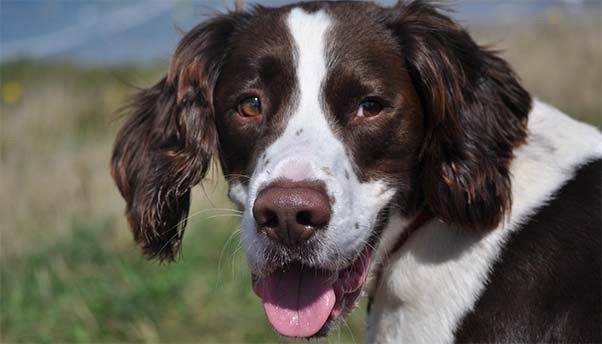The basic raw diet consists of 80% meat, 10% bone, 10% organ (5% of which must be liver) from a variety of meat sources to provide the balanced nutrients required and help prevent food intolerances. Ideally aim for at least four different protein sources, rotating them and/or mixing them on a weekly or monthly basis.
Start with one protein source to help your dog’s digestive system adjust, chicken is best as even the most sensitive can tolerate it. Slowly introduce different protein sources one at a time.
You may need to add supplements, other food types (such as eggs or fish) and even consider fruit or vegetables for your dog as an individual. Please refer to our advisory blogs, or answers further below.
You are also welcome to contact our Customer Services or even our Nutrition Consultant using the email on our contact page.
The guide for adult dogs is 2%-3% of their body weight (or of their ideal body weight if they are under or overweight), ideally split between two meals a day. Other factors to take into consideration are their age
and level of activity. As each dog is different you may have to experiment to find the correct amount.
If you have determined that your dog is under or over their ideal weight and checked with the vet that there are no underlying issues, then to help aid:
• Weight loss - start at 2%. Due to there being no sugary grains, fruits or veggies in a raw diet they will naturally lose weight but if you need to reduce further then do it by 0.5% of body weight at a time but don’t go below 1% of the guide as this will then compromise the nutritional balance. Increase exercise and if giving treats remember to adjust meals accordingly.
• Weight gain - start at 3% and increase by 0.5% of body weight at a time. Feed small meals more regularly. Try to reduce their activity and minimise stressful situations – some dogs are naturally highly active, and some need quiet times away from children and other dogs.
Allow time for changes to take effect. Weigh your dog regularly and check their overall shape. You should be able to feel their ribs, spine and hips with a small amount of pressure, but they should not poke out. Viewing from above they should have a neat, tucked in waist. The tummy should go in, not bulge out. There should be no build-up of fat where the tail meets the body.
A raw diet does not need to be gradually introduced. Feed normal food at night and start raw in the morning.
Oily fish, raw whole eggs (shell included) and raw meaty bones are excellent nutritional extras you can add to our raw minces. Any other supplements should only be added according to your dog’s individual needs.
Your are welcome to discuss your dogs individual needs with our in-house nutrition consultant. Simply email from our contact page asking for them, and they will reply to you.
Fruit and veg is not essential to the dog’s diet as meat with a bone content does cover almost all a dog needs, but veg can be a useful low-calorie filler-upper if your dog needs to lose a bit of weight. However, as dogs only produce a small amount of the digestive enzyme, amylase, they cannot break down the cellulose walls of the vegetables so they will need to be pulped, mashed or slightly cooked.
If you have a dog prone to yeasty ears or skin infections avoid fruits and vegetables as these can promote yeast growth. Extra nutrients can be added with anti-yeast supergreens like Wheatgrass instead.
Do read our Do I need to add Fruit and Vegetables? Blog to find out more.
No. Carnivores cannot easily digest carbohydrates. Wheat and rice provide little or no nutritional value, they are just used as fillers.
We do not advise to mix the two. Raw food triggers strong gastric acidity enabling proper digestion of the raw food, breaking down bone and killing bacteria. Kibble encourages the development of unbeneficial microbiome bacteria which slows down the digestive process and weakens the stomach acid allowing bacteria to flourish and will make your dog more susceptible to illness. It really is safer to simply feed one type of food.
Raw meaty bones are a complex source of biologically balanced vitamins and minerals and are ideal for your dog’s mental and dental health. Periodontal disease can be greatly improved by introducing raw meaty bones to your dogs diet.
Marrow and Knuckle Bones (referred to as weight bearing bones) are purely recreational bones. They are very hard and can cause cracked teeth. Once all the meat and sinew has been chewed off, they should be removed.
NEVER give your dog cooked bones. Cooked bones are brittle and splinter whereas raw bones are softer and flexible and easily broken by chewing.
Always feed bones under supervision. If you have more than one dog separate them to give both the space they need to feel safe chewing.
No. It's a common misconception that raw fed pets are more at risk of contracting / suffering from worms. The extremely acidic environment in the raw fed gut is a naturally hostile environment for intestinal worms. The drier stool is also not life giving to them.
At the Farmers Dog we follow strict sourcing and testing procedures to ensure none of our products ever contain or encourage worms.
If you will also be feeding wild game and fish not from ourselves, then it is important to freeze it for a minimum of three weeks (even if from a supermarket to be certain it has been frozen for sufficient time).
A raw diet frequently makes dogs a lot calmer and happier. In some cases, their new raw meals are going to be of much higher value to them so they may prize it and become tense if approached when eating. This is normal and it is best to give them space to eat it, so they know you are not going to take it away. Follow the same training rules as for retrieving items from your dog.
Behaviourally, raw feeding does not lead to dogs becoming hunters and killers and they are no more likely to worry livestock, bite other dogs, children or people than when on their kibble diet. The dog’s hunt pattern is eye-stalk-chase-grab bite-kill bite–crush bite–consume. In raw feeding we remove almost all the steps (by feeding raw meaty bones and minces) leaving only crush bite-consume.
As long as the meat is still cold it is safe to refreeze. For example, you can partly defrost to portion and then refreeze. Or if your delivery has partially defrosted in transit, it is safe to put it straight into the freezer.
It is not uncommon for your dog to go through a detox period. You can give your dog Slippery Elm powder or probiotics to help, but it is best to let it sort itself out as it will in a couple of stools.
If you have been giving your dog different protein sources, you could try going back to basics by starting again with chicken and then slowly introducing new proteins as you did in the beginning.
If the diarrhoea persists and all options have been covered such as worms, or there are other signs such as blood, lethargy or fever, then you should consult your vet as soon as possible.
Yes. Feeding meat and raw meaty bones frozen can help slow down dogs who gulp down their food without chewing it properly.
It is normal for raw fed dogs to not drink as much water as they did when on kibble. Raw meat has a high moisture content. That being said, a bowl of fresh water should always be available. You may find they drink more after chewing raw bones.
Believe it or not, this happens quite often. Sometimes they just don't recognise it as food. Sometimes it’s the smell or texture. You could try hand feeding to start them off or forming mince into balls or adding a little bit of something else like fish or another meat to mix it up a bit. Or the tough love approach - offer it, if they refuse it put it back in the fridge and offer again at the next mealtime. You may even need to add in a bit of their old food to get them going.
Bone Broth is a wonderful tempter to add to meals.
Feeding a raw, unprocessed diet can benefit many allergy presentations in the skin and the gut.
If your dog has allergies to certain proteins, it is possible to achieve a balance of vitamins and minerals from just one or two protein sources by feeding as many different parts of the animal as possible.
If your dog is on medication, care must be taken during the transition period onto raw.
You are welcome to chat to our Nutrition Consultant about your dogs allergies or intolerances. Simply email from our contact page and ask, they will then reply to you.
Your dog will be healthier and happier. Raw fed dogs utilise most of their food which results in smaller, firmer, almost odourless poops.
It goes without saying that good hygiene practice is essential when handling, preparing and storing raw food. All our meat is human grade and is no more of a risk to you than meat for your own consumption. At The Farmer’s Dog we are DEFRA and APHA approved, have full product traceability and batch test our food in line with FSA requirements.
Vets get little or no nutritional training and are subject to the sales pitch and advice by processed food manufacturers that want to get their food for sale in the clinic reception areas. But there are some advocating it and if you go to the website of the Raw Feeding Veterinary Society you can look for a pro-raw vet or professional in your area.




